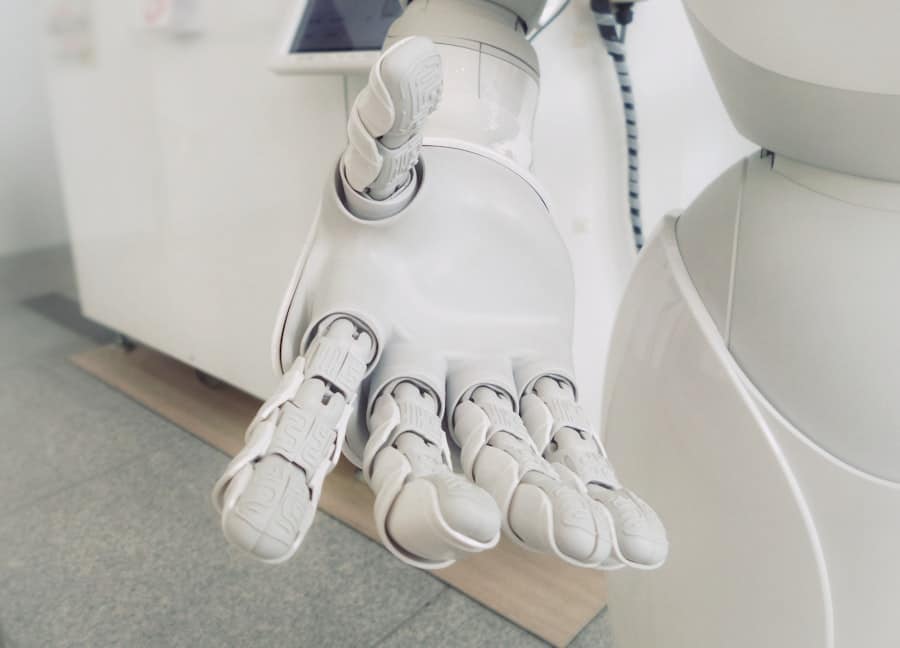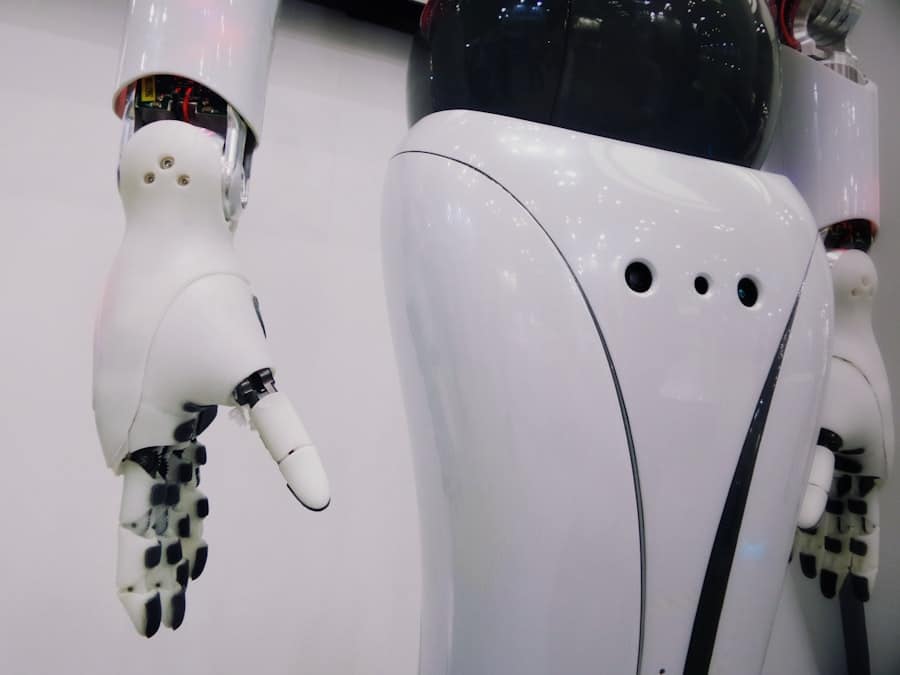In recent years, the healthcare landscape has witnessed a significant transformation with the advent of robot-assisted rehabilitation. This innovative approach has emerged as a response to the growing demand for effective rehabilitation solutions, particularly in the wake of an aging population and the increasing prevalence of chronic conditions. The integration of robotics into rehabilitation practices is not merely a trend; it represents a paradigm shift in how therapists and patients interact during the recovery process.
As healthcare systems strive to enhance patient outcomes while managing costs, robot-assisted rehabilitation offers a promising avenue for improving efficiency and effectiveness in therapeutic interventions. The rise of robot-assisted rehabilitation can be attributed to several factors, including advancements in technology, increased investment in healthcare innovation, and a greater understanding of the benefits of early and intensive rehabilitation. For instance, robotic devices such as exoskeletons and robotic arms have been developed to assist patients with mobility impairments, enabling them to engage in repetitive task training that is crucial for recovery.
These devices not only provide physical support but also facilitate a more engaging and motivating environment for patients, which can lead to improved adherence to rehabilitation protocols. As healthcare providers recognize the potential of these technologies, the integration of robotics into rehabilitation programs is becoming increasingly common.
Key Takeaways
- Robot-assisted rehabilitation is on the rise in healthcare, offering innovative solutions for patients recovering from injuries or surgeries.
- Advancements in robotic technology have led to more sophisticated and customizable rehabilitation options for patients, improving their overall experience and outcomes.
- Robot-assisted rehabilitation has shown positive impacts on patient outcomes, including improved mobility, strength, and overall quality of life.
- Despite its benefits, robot-assisted rehabilitation also comes with challenges and limitations, such as cost, accessibility, and the need for skilled personnel to operate the technology.
- Integrating robotics into rehabilitation therapy programs can enhance the effectiveness of treatment and provide patients with a more personalized and tailored approach to their recovery.
Advancements in Robotic Technology for Rehabilitation
The field of robotic technology has made remarkable strides in recent years, particularly in the context of rehabilitation. One of the most notable advancements is the development of exoskeletons, wearable robotic suits designed to assist individuals with lower limb disabilities. These devices are equipped with sensors and actuators that enable them to mimic natural movement patterns, allowing users to walk, stand, and even climb stairs.
Research has shown that exoskeletons can significantly enhance mobility and independence for patients recovering from stroke or spinal cord injuries, providing them with a sense of agency that traditional therapies may not offer. In addition to exoskeletons, robotic therapy devices have been designed for upper limb rehabilitation. These devices often utilize robotic arms or manipulators that guide patients through specific movements, helping them regain strength and coordination after injury or surgery.
For example, devices like the ArmeoSpring and the InMotion Arm have been shown to improve motor function in stroke patients by providing real-time feedback and adaptive resistance during therapy sessions. Such advancements not only enhance the effectiveness of rehabilitation but also allow therapists to monitor progress more accurately through data collection and analysis.
The Impact of Robot-Assisted Rehabilitation on Patient Outcomes

The impact of robot-assisted rehabilitation on patient outcomes has been a focal point of numerous studies, revealing promising results across various patient populations. One significant advantage is the ability to provide intensive therapy that may not be feasible with traditional methods.
This is particularly beneficial for stroke survivors who require extensive practice to regain motor function. Research indicates that patients who engage in robot-assisted therapy often experience faster recovery times and improved functional abilities compared to those who receive conventional therapy alone. Moreover, robot-assisted rehabilitation has been shown to enhance patient motivation and engagement during therapy sessions.
The interactive nature of robotic devices can make rehabilitation feel less like a chore and more like an engaging activity. For instance, some robotic systems incorporate gamification elements, allowing patients to participate in virtual environments where they can complete tasks while receiving therapeutic benefits. This approach not only fosters a positive attitude towards rehabilitation but also encourages patients to push their limits, ultimately leading to better outcomes.
Challenges and Limitations of Robot-Assisted Rehabilitation
Despite the numerous benefits associated with robot-assisted rehabilitation, several challenges and limitations persist that must be addressed for widespread adoption. One primary concern is the high cost associated with robotic devices and systems. The initial investment required for purchasing and maintaining these technologies can be prohibitive for many healthcare facilities, particularly those operating on tight budgets.
Additionally, reimbursement policies for robot-assisted therapies are still evolving, which can create financial barriers for both providers and patients seeking these advanced treatment options. Another challenge lies in the need for specialized training for healthcare professionals who will be operating these robotic systems. While many therapists are adept at traditional rehabilitation techniques, the integration of robotics requires a different skill set that includes understanding how to program devices, interpret data, and adapt therapy protocols based on patient responses.
This necessitates ongoing education and training programs to ensure that therapists are equipped to maximize the potential of robotic technologies in their practice.
Integrating Robotics into Rehabilitation Therapy Programs
The successful integration of robotics into rehabilitation therapy programs requires a multifaceted approach that considers both technological capabilities and clinical workflows. One effective strategy is to establish interdisciplinary teams that include engineers, therapists, and healthcare administrators who can collaborate on developing protocols that incorporate robotic devices seamlessly into existing practices. This collaboration can help identify specific patient populations that would benefit most from robot-assisted therapies and tailor interventions accordingly.
Furthermore, pilot programs can be implemented to assess the feasibility and effectiveness of integrating robotics into rehabilitation settings. These programs can provide valuable insights into how robotic devices can complement traditional therapies while also addressing logistical challenges such as space requirements and equipment maintenance. By gathering data from these pilot initiatives, healthcare providers can make informed decisions about scaling up robot-assisted rehabilitation services within their organizations.
The Role of Robotics in Personalized Rehabilitation Plans

Personalized rehabilitation plans are essential for optimizing patient outcomes, as each individual presents unique challenges and goals during their recovery journey. Robotics plays a pivotal role in facilitating this personalization by offering adaptive technologies that can be tailored to meet specific patient needs. For instance, many robotic systems are equipped with sensors that monitor patient performance in real-time, allowing therapists to adjust parameters such as resistance levels or movement patterns based on individual progress.
Additionally, robotics can enhance the customization of therapy by providing diverse modalities that cater to different types of injuries or disabilities. For example, a patient recovering from a stroke may benefit from upper limb robotic therapy focused on fine motor skills, while another individual with a spinal cord injury may require lower limb exoskeleton training for gait re-education. By leveraging robotic technologies, therapists can create dynamic rehabilitation plans that evolve as patients progress, ensuring that each individual receives the most effective interventions tailored to their specific circumstances.
Ethical Considerations in Robot-Assisted Rehabilitation
As with any emerging technology in healthcare, ethical considerations surrounding robot-assisted rehabilitation must be carefully examined.
While robotic devices can enhance efficiency and provide valuable support, there is a risk that over-reliance on technology may diminish the therapeutic relationship between patients and therapists.
Maintaining a balance between technological assistance and human empathy is crucial for fostering trust and motivation in patients undergoing rehabilitation. Another ethical consideration involves data privacy and security. Many robotic systems collect sensitive patient information related to performance metrics and progress tracking.
Ensuring that this data is handled responsibly and securely is paramount to maintaining patient confidentiality and trust in robotic therapies. Healthcare providers must establish clear protocols for data management while also educating patients about how their information will be used and protected throughout their rehabilitation journey.
Future Trends and Opportunities in Robot-Assisted Rehabilitation
Looking ahead, the future of robot-assisted rehabilitation appears promising as technological advancements continue to evolve at a rapid pace. One emerging trend is the integration of artificial intelligence (AI) into robotic systems, which has the potential to revolutionize personalized rehabilitation further. AI algorithms can analyze vast amounts of data collected from therapy sessions to identify patterns and predict patient outcomes more accurately.
This capability could lead to more precise adjustments in therapy protocols based on individual responses, ultimately enhancing recovery rates. Moreover, as telehealth becomes increasingly prevalent in healthcare delivery, there is an opportunity for remote robot-assisted rehabilitation programs to emerge. Patients could engage with robotic systems from their homes under the guidance of therapists through virtual platforms.
This approach would not only increase accessibility for individuals living in remote areas but also allow for continuous monitoring and support without the need for frequent clinic visits. In conclusion, robot-assisted rehabilitation represents a transformative force within healthcare that holds great promise for improving patient outcomes through innovative technology. As advancements continue to unfold, addressing challenges related to cost, training, and ethical considerations will be essential for maximizing the benefits of this approach while ensuring equitable access for all patients seeking rehabilitation services.
In the rapidly evolving field of healthcare, robot-assisted rehabilitation is gaining significant attention for its potential to transform patient recovery processes. As we explore the future of this innovative approach, it’s essential to consider the technological advancements that support such developments. An interesting related article is Unlock Your Potential with the Samsung Galaxy Book2 Pro, which discusses the capabilities of modern technology in enhancing productivity and efficiency. The integration of advanced computing devices, like the Samsung Galaxy Book2 Pro, can play a crucial role in the development and implementation of sophisticated robotic systems in healthcare settings, ultimately improving patient outcomes and rehabilitation experiences.
FAQs
What is robot-assisted rehabilitation in healthcare?
Robot-assisted rehabilitation in healthcare involves the use of robotic devices to assist in the physical therapy and rehabilitation of patients with mobility impairments. These devices can help patients regain strength, coordination, and mobility after an injury or illness.
How does robot-assisted rehabilitation work?
Robot-assisted rehabilitation works by using robotic devices to guide and support a patient’s movements during therapy sessions. These devices can provide assistance or resistance as needed, and can track the patient’s progress over time.
What are the benefits of robot-assisted rehabilitation?
Robot-assisted rehabilitation can provide more consistent and precise therapy to patients, as well as the ability to track and analyze their progress. It can also reduce the physical strain on therapists, and provide a more engaging and interactive experience for patients.
What is the future of robot-assisted rehabilitation in healthcare?
The future of robot-assisted rehabilitation in healthcare is likely to involve advancements in robotic technology, including more sophisticated and adaptable devices. Additionally, there may be increased integration of robotics with other healthcare technologies, such as virtual reality and artificial intelligence.
Are there any limitations to robot-assisted rehabilitation?
While robot-assisted rehabilitation can be highly effective, it is not a one-size-fits-all solution. Some patients may not be suitable candidates for this type of therapy, and it may not be appropriate for all types of injuries or conditions. Additionally, the cost of robotic devices and the need for specialized training can be barriers to widespread adoption.

